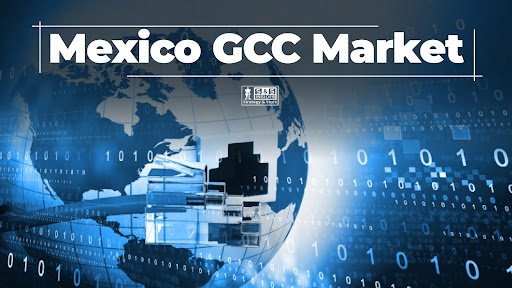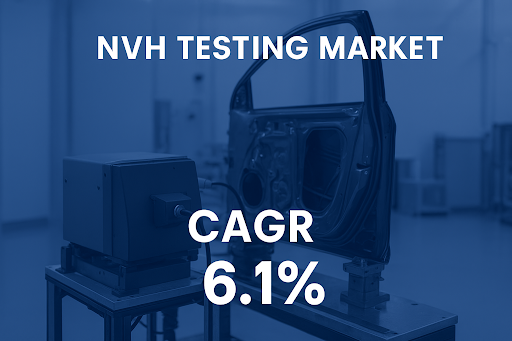
How Global Capability Centers Are Transforming Mexico’s Economic Landscape
- News
- October 1, 2025
- No Comment
In recent years, Mexico has rapidly emerged as a strategic hub for multinational corporations seeking to expand their operational capabilities. Once primarily recognized for its strong manufacturing base and proximity to the United States, Mexico is now establishing itself as a competitive destination for Global Capability Centers (GCCs). These centers—encompassing shared services, innovation hubs, and digital excellence units—are becoming a cornerstone of the nation’s evolving business ecosystem.
The Mexico GCC Market Size was valued at USD 5.29 Billion in 2023 and is expected to reach USD 18.60 Billion by 2032 and grow at a CAGR of 13.42% over the forecast period 2024-2032. This impressive growth highlights the country’s rising role as a nearshore powerhouse for global enterprises pursuing cost optimization, digital transformation, and talent diversification.
Why Mexico Is Emerging as a GCC Powerhouse
Several interconnected factors are fueling Mexico’s momentum in the GCC landscape. One of the most compelling is geographical advantage. Being located just south of the U.S. border allows companies to operate in similar time zones, ensuring real-time collaboration with North American headquarters. This time zone alignment is a major reason many organizations are shifting their focus from distant offshore destinations toward Mexico’s nearshore potential.
In addition, Mexico’s mature talent pool has become a magnet for global organizations. The country produces thousands of graduates annually in engineering, information technology, finance, and management disciplines. Universities across cities such as Guadalajara, Monterrey, and Mexico City are aligning curricula with industry requirements, making the local workforce increasingly skilled and globally competitive.
Another crucial driver is government support and business-friendly reforms. Policies aimed at promoting digital infrastructure, reducing bureaucratic hurdles, and enhancing intellectual property protection have significantly improved Mexico’s investment environment. As a result, international companies now perceive Mexico not merely as a cost-saving alternative, but as a destination for innovation and growth.
Regional Hotspots and Industry Focus
Guadalajara—often referred to as the “Silicon Valley of Mexico”—has become a prime location for technology-driven GCCs. The city’s vibrant ecosystem includes major global players that have established innovation labs, R&D units, and digital operations centers. Monterrey, on the other hand, is a hub for manufacturing excellence and financial operations, leveraging its well-developed infrastructure and close ties to industrial clusters.
Mexico City remains the nation’s economic heart, hosting a growing concentration of GCCs in banking, telecommunications, and digital transformation. The city’s cosmopolitan environment and access to diverse talent make it particularly attractive for strategic functions such as analytics, finance, and customer experience management.
Shifting From Cost Efficiency to Innovation
Initially, many global corporations viewed Mexico as a cost-effective destination for transactional processes. However, this perception is rapidly evolving. As digital transformation takes center stage across industries, GCCs in Mexico are moving up the value chain—shifting from basic operations toward innovation, analytics, automation, and digital enablement.
These centers are no longer limited to performing routine tasks. Instead, they are becoming integrated partners in enterprise strategy—developing AI-driven insights, enhancing process intelligence, and driving sustainability initiatives. The infusion of new technologies like machine learning, robotic process automation (RPA), and cloud computing is making GCCs pivotal in steering global business outcomes.
This transition is also supported by the country’s rising start-up ecosystem. Mexico’s innovation landscape is flourishing, supported by venture funding, tech accelerators, and cross-border collaboration. This synergy between start-ups and established GCCs is creating a fertile ground for digital experimentation and co-creation.
Talent and Workforce Evolution
A defining strength of Mexico’s GCC environment lies in its young and adaptive workforce. Professionals are increasingly trained in advanced analytics, software development, cybersecurity, and business intelligence—skills that are central to the new-age global enterprise.
Moreover, Mexico’s cultural affinity with North America plays a vital role in fostering collaboration. The bilingual proficiency of professionals, combined with their understanding of Western business culture, reduces communication barriers and strengthens trust. Many global leaders have identified this as a key differentiator compared to more distant offshore markets.
Upskilling initiatives are further reinforcing this trend. Both private corporations and public institutions are investing in digital education programs, fostering a workforce that can seamlessly integrate into global innovation networks. As a result, Mexico’s human capital is not only abundant but also increasingly future-ready.
Challenges and Opportunities Ahead
Despite the optimistic outlook, certain challenges remain. Competition for top talent is intensifying, particularly in high-demand areas like data science and artificial intelligence. Wage inflation in major cities is another factor that companies must carefully manage. Additionally, maintaining cybersecurity standards and ensuring data privacy compliance are ongoing priorities for multinational enterprises.
However, these challenges are outweighed by a broad spectrum of opportunities. Mexico’s expanding digital infrastructure, strengthened bilateral trade relations, and the North American supply chain realignment driven by “nearshoring” trends are all contributing to the GCC market’s acceleration. The ongoing shift of manufacturing, IT, and back-office functions from Asia to the Americas further positions Mexico as a preferred destination for global firms seeking operational agility and resilience.
The Future Outlook
Looking ahead, the next decade is expected to be transformative for Mexico’s GCC sector. The convergence of technology, talent, and trade will likely elevate the nation from a nearshore alternative to a strategic global innovation hub. As automation, AI, and cloud platforms continue to reshape how enterprises operate, Mexico’s GCCs will play an increasingly influential role in driving global competitiveness.
Industry experts anticipate deeper integration between local operations and headquarters—where GCCs act as centers of excellence rather than cost centers. This evolution will foster continuous innovation, operational efficiency, and faster market responsiveness for global enterprises operating in Mexico.
Conclusion
Mexico’s rise as a hub for Global Capability Centers marks a pivotal shift in its economic identity. The country is no longer just a manufacturing powerhouse—it is becoming a strategic partner for global digital transformation and innovation. With strong talent capabilities, supportive government initiatives, and a robust infrastructure foundation, Mexico is poised to strengthen its position as one of the most dynamic GCC destinations worldwide.
The coming years will reveal an increasingly interconnected ecosystem where technology, talent, and trade converge—solidifying Mexico’s role in the global value chain and propelling its GCC market toward sustained growth and global recognition.



